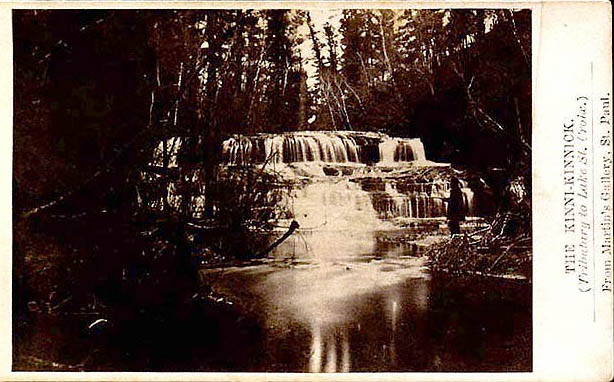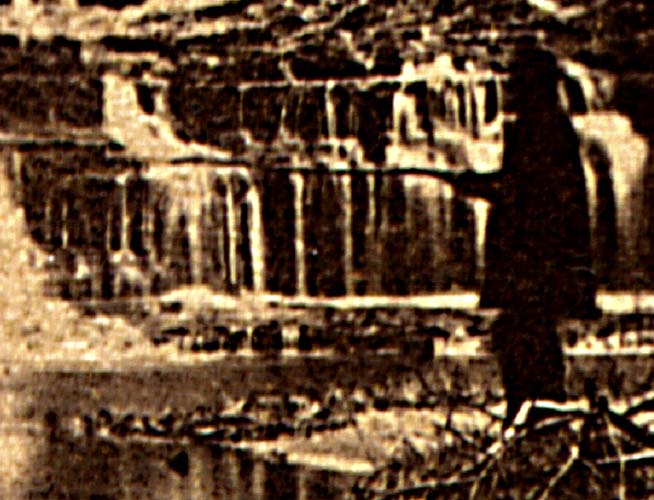Kinni1.html


The Kinni-Kinnick (Tributary to Lake St. Croix)
Martin’s Gallery, St. Paul, Minnesota
James E. Martin is first listed as a photographer in St. Paul’s business directory in 1858. He issued cartes de visite and stereoscopic photographs, including subjects related to the 1862 Sioux Revolt. Martin’s Gallery is listed at two or three different locations until 1870, at which time the business directory shows the gallery under different ownership. Martin remained active, in partnership with B. F. Upton of St. Paul.
This carte de visite is dated “Aug. 26 ’63” in pencil on the verso. This is probably the date the photograph was purchased, rather than the date the negative was made. The print itself may be made on plain salted paper, glazed with a thin coating of gum arabic. This process is usually seen only on the earliest cartes de visite; after 1859 or 1860 albumen paper, with its more consistent semi-gloss surface, was almost universally used.
The composition itself is a placid view of a gem of nature, hidden away in the wilderness. This peaceful image was made while the Civil War was spilling blood to the east, and at a time the state of Minnesota was offering settlers a $25 bounty for the scalps of Sioux Indians.
To the right of the photograph, an angler waits for a bite. Seen only in silhouette, the figure is easy to overlook. Often, 19th century photographers would place a figure into a landscape to indicate scale–and to emphasize how small a human being could appear in the face of the power of nature at, say, Niagara Falls. In this case, the presence of the fisherman enhances the peaceful quality of the scene.
SMALL WORLDS: The Art of the Carte de Visite

Copyright © 1998 The American Museum of Photography
